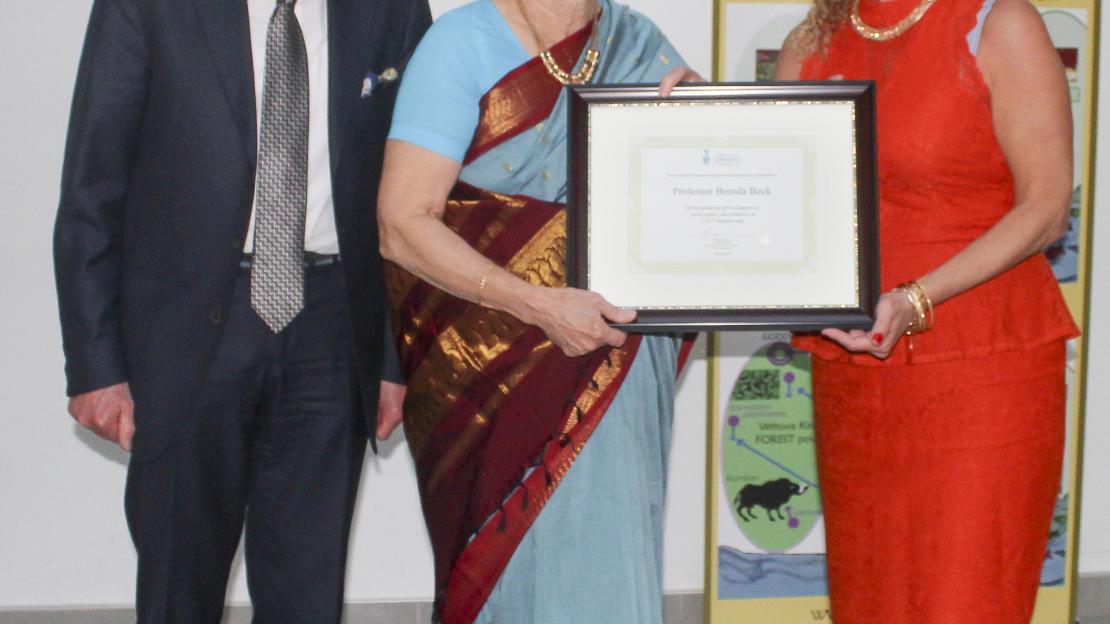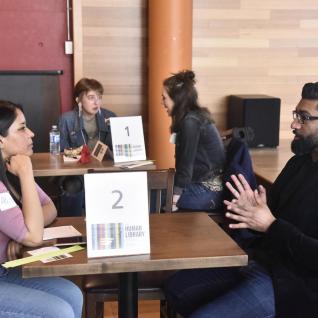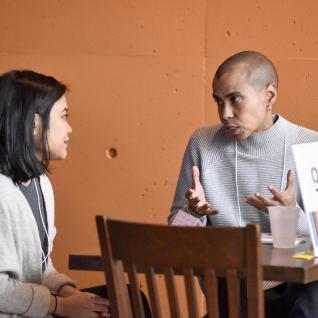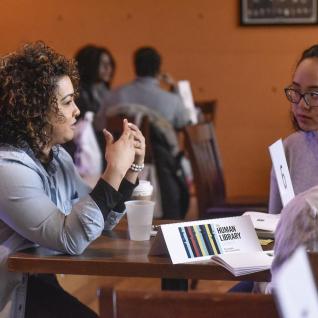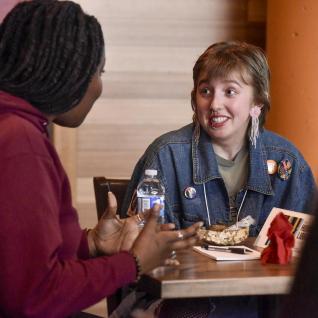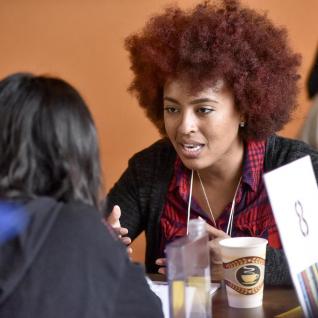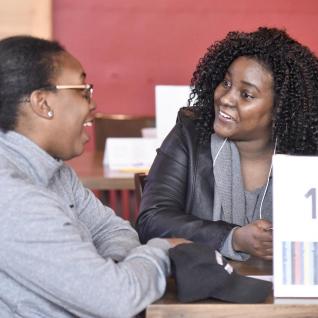For Mitch Robert George, also known as Red Pine Spirit Man of the Turtle Clan, community is a source of healing.
At the recent Hart House Human Library Project, he shared parts of his story in hopes of helping others. George, an intergenerational residential school survivor, joined ten individuals who spoke at the unique storytelling event that recently took place at U of T Scarborough.
“If my experiences can contribute to anybody in any way, to inspire somebody to want to learn about their own background or culture, or help them with their hopes and aspirations – if I help just one person, then I’ve done a good job,” he says.
Tagged “real people, real conversations,” the project is designed to create dialogue, promote understanding and reduce prejudice, says Trish Starling, community engagement facilitator at U of T’s Hart House.
“The Human Library Project is an empathy-building exercise where you meet people one-on-one and engage in a truly human interaction that allows you to hear their stories firsthand,” she says.
The project allows people to become the books, or human stories, that community members are invited to borrow for a maximum of 25 minutes. Visitors get to listen to stories from those of different cultural and religious backgrounds, gender and age, as well as discussing their own journeys.
A six-time running Hart House initiative spanning five years, this year’s installment was done in partnership with U of T Scarborough’s Department of Student Life, Scarborough Campus Students’ Union (SCSU), ARTSIDEOUT, and the UTSC Library.
Resiliency and Rebirth, a theme informed by ARTSIDEOUT’s 2018 Rebirth, guided the discussions – Rebirth being the exploration of the journey towards healing and growth out of lived experiences in Scarborough.
Discussion prompt cards on tables throughout Rex’s Den included conversation starters with questions such as what is the next chapter for Scarborough? And do we experience a rebirth when we share our stories of resilience with our communities?
“I wanted to bring this project to Scarborough because I thought it stood for something really cool – people’s stories and people investing in other people’s stories,” says Nana Frimpong, SCSU Vice-President Equity.
Campus and off-campus community interaction are interwoven into the project. Everyone is invited to participate in what is described as a safe and positive way to question pre-conceived notions around race, class, gender, religion.
Visitors use a pamphlet called the Human Story Catalogue to identity which ‘stories’ they’d like to chat with.
One of the eleven stories included ‘The Diaspora Dilemma’ by Sharine Taylor, a U of T Scarborough student and artist. She writes that it’s through her art that she began to discover answers to questions such as how do we construct our identity and how do we foster belonging?
Current U of T Scarborough artist-in-residence Michèle Pearson Clarke spoke about ‘Holding Space for Grief’ while U of T Scarborough alum and entrepreneur Hamza Khan spoke about turning ‘Ideas Into Action.’ In all, eleven community members participated as storytellers. Many were recruited through connections to 150 Neighbours, a project that highlighted the stories of 150 Scarborough residents who contribute to the region.
Almost 100 community members and students visited the event, with some staying for one half hour session and others staying for several hours.
“One of the mandates of the SCSU is to always do things for students on campus, and while that’s important and that’s necessary, I think this event just proves that we have to reach out to our community,” says Frimpong.
“Around UTSC are people who call Scarborough home, and that includes immigrant families, racialized families – families that many of our students come from. This is a way to bridge those experiences in this place of learning and in this institution.”
